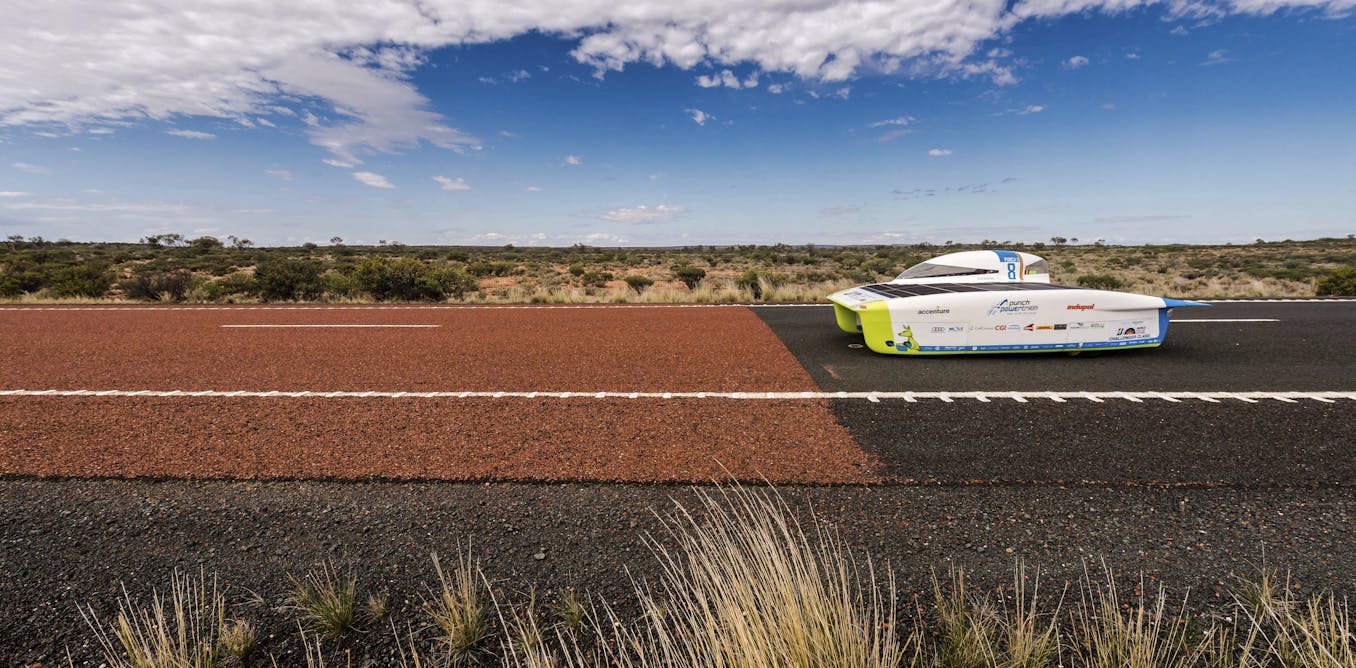Solar cars do exist. But they look like toy cars.
The best place to see them is at the World Solar Challenge, a solar-powered car race held every two years in Australia.
In the race, competitors have to travel around 3,000 kilometers from Darwin, on the country's north coast, to Adelaide, on the south coast, using only the sun's energy.
Many of the cars competing in this race look more like vehicles from amusement parks or science fiction than cars you might see on the road.
And that tells us something about why solar cars are not an option for everyday travel - at least not yet, explains Chen Liu, professor of computer and electrical engineering at Clarkson University, in an article in The Conversation.

Collecting enough sunlight
Although a lot of sunlight falls on the Earth during the day, this light is dispersed as it passes through the atmosphere, so the amount that reaches a given surface is quite small.
If we calculate the average amount of solar energy we could collect in a given area over the course of an entire year to eliminate the effects of the different seasons, we get around 342 watts perm2. That's roughly enough energy to run a normal fridge.
The large solar parks that collect electricity for cities and towns compensate for the fact that sunlight is spread over such a large area by placing millions of solar panels on thousands of hectares. Some, especially in desert areas, use fields of mirrors to concentrate the sun's energy.
But a normal car doesn't have enough surface area to collect much solar energy. The sizes of these cars vary greatly, but a normal-sized car in the USA is about 5 meters long by 2 meters wide, so it has about 9 to 10m2 of horizontal surface.
If this area could all be used to capture solar energy, it would collect around 3,420 watts. That's enough to run a fridge, a dishwasher and a microwave oven, almost an entire kitchen - but not enough to propel an electric car on a normal journey.
Turning sunlight into energy
Another problem is that current solar panels are not very efficient at converting sunlight into electricity. Typically, their efficiency is around 20%, which means that they convert around 1/5 of the solar energy that reaches them into electricity.
This means that 3,420 watts of solar energy falling on an average car covered in solar panels would produce only 684 watts that the car could use. In comparison, it takes around 20,000 watts for an electric vehicle to run at 100 kilometers per hour.
Vehicles competing in the World Solar Challenge tend to be large and have a design that maximizes their horizontal surface area. This helps them collect as much sunlight as possible.
As a concept vehicle, it's acceptable, but most models don't have many windows or room for anything except the driver.
When the sun doesn't shine
Another challenge is that geographical location, daylight hours and weather conditions affect the amount of solar energy that can be generated.
The Earth is tilted on its axis, so not all areas receive equal amounts of sunlight at any given time.
When the Northern Hemisphere tilts towards the Sun, the upper part of the globe receives more sun exposure and observes spring and summer, while the Southern Hemisphere is colder and darker.
When the southern half of the planet tilts towards the Sun, the areas in the southern half of the Earth receive more sun and the upper half receives less.
Areas close to the equator receive constant sunlight all year round, so areas closer to the equator, such as Southern California or the Sahara desert, have more intense solar energy than places closer to the Earth's poles, such as Alaska.
Solar cars would also struggle to collect enough sunlight on cloudy or rainy days. Even large utility companies with huge solar parks have to plan for periods when the sun doesn't shine.
And drivers need their cars to run at night. For a solar car to work after dark, it would have to use the extra energy it collected during the day and stored in a battery.
In addition, solar panels and batteries increase the weight of the car, and heavier cars need more energy to run.
Several teams of researchers are working in various countries to design solar cars that are more suitable for everyday use.
For this to happen, manufacturers will have to make solar panels more efficient at converting sunlight into energy and design solar panels that are better suited to cars.
It will also be essential to lower the cost of solar systems for cars so that the average consumer can afford them.
For now, the closest option to a solar car is an electric vehicle, which is charged at home or at a charging station.
Depending on how the electricity is produced, part of the energy that powers these cars probably comes from solar panels, wind turbines, hydroelectric dams or other renewable sources.
So if you're driving or riding in an electric car, you could be traveling on solar energy. It just wasn't produced in the car.





